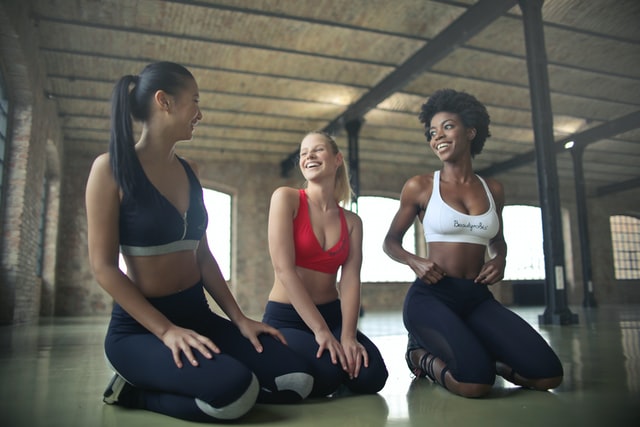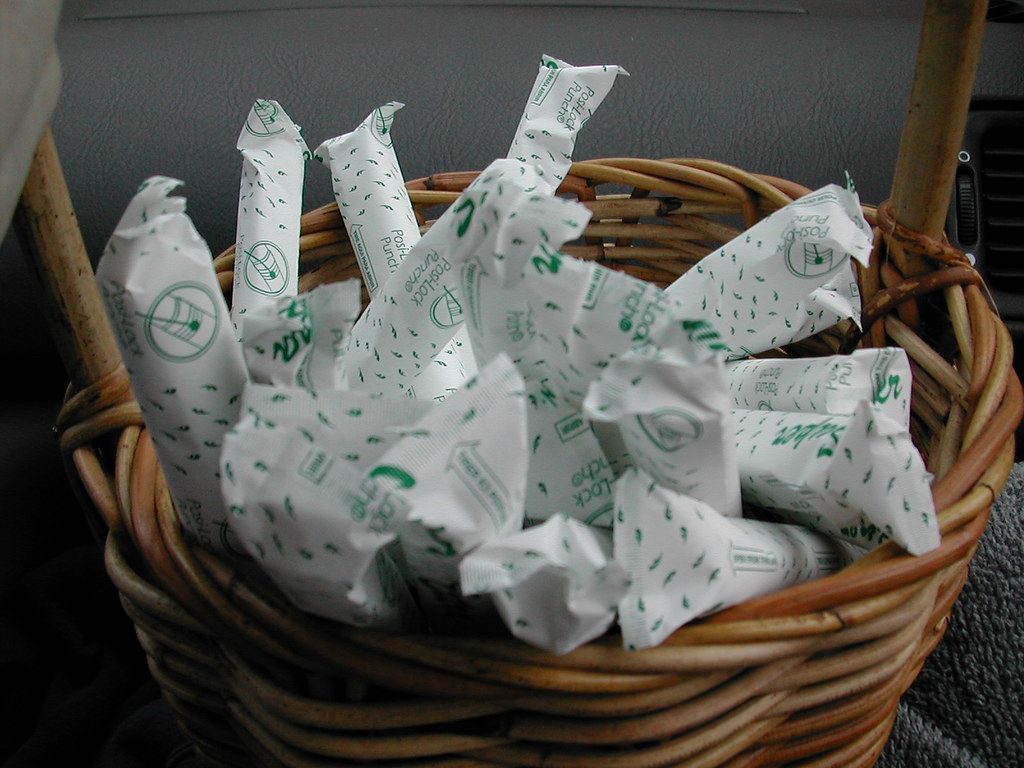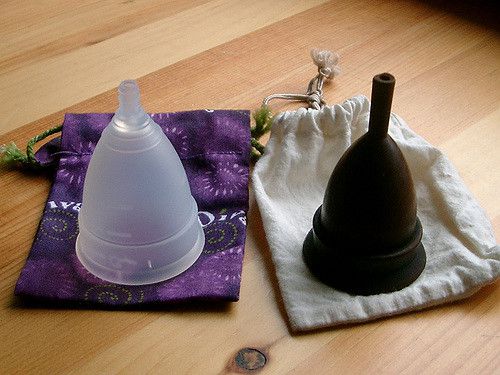Ladies, it’s time to come clean: Are you using toxic feminine care products? If you’ve never thought twice about what you’re putting down there for that time of month you’re really going to want to read this.

Let’s be real. No one likes when Aunt Flo visits. Just as soon as she comes you want her to leave. Just grab for the nearest tampon or pad and you know the drill. But finding out the dirty little secrets about most feminine care products is enough to have you rethink how you take care of Lady V.
In the past, many commercial tampons and pads didn’t list their ingredients. For the longest time, I didn’t even think to look for that. Aware of the importance now, the absence of ingredients seems like a clever way to skate by women even giving a thought to what the products are made of in the first place. If there are no ingredients, well that takes care of the safety issue right there huh? You would just assume tampons and pads are safe if you didn’t know any better.
Companies classify their products as “medical devices”, due to FDA regulations implemented as a result of several women dying in the 1980s from toxic shock syndrome (TSS), linked to synthetic ingredients in superabsorbent tampons (source). But the flip side of this is no requirement to list ingredients. The worst part is these are commonly used brands like Always or Tampax for instance, that account for the bulk of tampons and pads used by millions of women every month.
I’m annoyed that I didn’t know better and used these brands for like 20 years of my cycle. Which is why, while not the lightest topic (pun intended), I believe I have a responsibility to share this with women.
This is no joke since women with a menstrual cycle use thousands of feminine hygiene products throughout their lifetime, and are experiencing far too many health conditions of their reproductive organs not to deserve to know what something inserted into that area of their body every single month is made of, and the potential cumulative effects that add up over a lifetime.
Fear not lovely ladies (and nice fellas if you are reading this out of concern for the lovely women in your life), fortunately there are safer options for down there, but first let’s discuss this toxic feminine care product thing…
What’s Really in Feminine Care Products and Why it Matters
In response to the ongoing demands from consumers to know about what is in pads and tampons, just last year, some companies like Proctor & Gamble have started posting ingredients lists on their websites, (like this one on the Tampax website), or in information included in the packaging, and in some cases, on the packaging itself.
While it’s a step in the right direction, I feel it may be halfhearted, using descriptions such as “fragrance ingredients like those found in other women’s products.” Am I missing something here? I’m having a difficult time finding the help in this.
Chlorine bleaching of tampons is something health and consumer advocates have been trying to warn women about for years. This process creates a highly toxic substance called dioxin, a well known carcinogen that has been linked to hormonal/endocrine problems, abnormal tissue growth in the abdomen and reproductive organs, abnormal cell growth which can lead to cancer, damaged immune system, liver disease, and more.
Tampax now claims that it uses an elemental chlorine-free process which does not cause the production of dioxin but what about the other synthetic ingredients?
Tampax lists the following ingredients: cardboard made of paper or plastic with pigments for color, rayon, polyester, polyethylene, polypropylene, and don’t forget about that synthetic fragrance. And that’s just one brand. Other common materials used are propylene glycol, phthalates, BPA & BPS, artificial dyes, and odor neutralizing chemicals, things that have been linked to hormone disruption, cancer, birth defects, dryness, and infertility.
And since they’re not organic, you can count on pesticide/insecticide residues, and genetically modified cotton, since according to the USDA, 94 percent of cotton crops in the US are GM crops. This are things to seriously be aware of since vaginal tissue is very permeable allowing these toxins to absorb right into your bloodstream.

As I was reading through the FAQs on the Tampax website I found myself utterly dumbfounded by the responses, especially the response to this one…
“I Read That 100% Organic Cotton Tampons Are Safer Than Tampons With Rayon Or Other Synthetic Material. Is This True?”
The answer…
“No; it is misleading as it may cause girls and women to think that they are protected from TSS by using all-cotton tampons. This may result in someone ignoring the symptoms of TSS and not seeking immediate treatment, which could affect the severity of illness.”
Dear Tampax, I am insulted that you assume women who choose safer alternatives to your tampons think there is built in TSS protection. We just don’t want to use your toxic products. Last time I checked, the same TSS warnings you have on your products are also on organic cotton tampon labels. The claim is not protection from TSS, rather less toxic materials…something you sadly cannot claim.
Before we move on, I ask you this “Who needs that stuff in their hoo-ha? Am I right ladies?” Seventh Gen featuring Maya Rudolph’s Vajingle anyone???
Environmental Impacts We Can’t Ignore
Time for a pad story :( Most conventional pads are made from 90 percent crude oil plastic. It’s estimated that approximately 20 billion pads, tampons and applicators are ending up in US landfills annually. Each menstruating woman will throw away almost 17,000 disposable products that require hundreds of years to biodegrade. Chlorinated hydrocarbons add to the pollution of our waterways. The Environmental Protection Agency (EPA) verifies the presence of dioxin in the environment:
“Over the past decade, EPA and industry have been working together to dramatically reduce the production of dioxin in the environment. However it should be noted that though levels have decreased in the last 30 years, dioxins are extremely persistent compounds and break down very slowly. In fact, a large part of the current exposures to dioxins in the US is due to releases that occurred decades ago.”
Hmmm, if dioxins are taking this long to breakdown outside, what in the heck is going on inside the delicate environment of countless lady flowers?! About those long term effects mentioned earlier. Alright, now that we got all that out of the way let’s move on to fresh alternatives and happy lady flowers!
Natural Feminine Hygiene Products
Disposables
If reusable products aren’t your thing, this is your best option. I started here when I made the switch from conventional products. Seventh Generation and Natracare offer some of the best feminine care products with full disclosure labeling and are friendly on your wallet.
Pros:
- One of the easiest ways to transition from conventional feminine hygiene products
- 100% organic cotton (tampons), no chlorine bleaching means no dioxin for you and the environment
- Great for people with allergies and sensitive skin
- Comfortable and absorbent
Cons:
- Cost slightly more than conventional tampons and pads
- You have to repurchase regularly
- Not totally environmentally friendly due to waste factor
Reusables
Next up are reusable feminine hygiene products. If the thought of this gives you the weeby jeebies, I totally get it. I remember ordering menstrual cups and reusable pads for the health and beauty section of natural foods stores I worked in and swearing up and down I’d never go there. A whole different level of natural and way too “out there” for me! Never say never right? Here are reusable options.
Organic Cotton Cloth Pads or Underwear
Makers of the well known DivaCup, Lunapads is a front runner when it comes to reusable feminine care brands. Their high quality, comfortable organic cotton pads and underwear aren’t Victoria Secret, but totally doable for that time of the month. They also have a selection of reusable wet/dry bags with super cute fabrics (you’d never be able to tell what’s in them) to carry extra supplies in one side and used ones in the water-proofed lined side, when you’re out or traveling. GladRags have also been another reliable option with a long track record.
Pros:
- Cost effective with no need for replacement every month, can last for years
- Organic cotton, undyed or naturally derived dye
- Breathable, highly absorbent and comfortable
- Great to wear at home and overnight
- Environmentally friendly – no throwing away every month
Cons:
- Pads can be a bit bulky if wearing out, underwear are a better option
- You do have to wash them, instead of tossing them in the trash
Menstrual Cups

Yeah, so remember how I said I would never switch to reusable products…I’m that girl. I can’t really say for sure how it transpired but since taking the plunge about a year ago I can’t believe I was so against it. I can’t tell you how many annoying trips to the restroom this would have saved me from while traveling, camping, and enjoying countless other adventures. It’s certainly weird at first and there is a learning curve, but by the fourth month I wondered why it took so long to hop on this train!
Pros:
- Pay once for a solution that lasts years
- Plastic-free and BPA-free, made from medical grade silicone
- Collects instead of absorbs, no dryness or irritation
- Convenient – can be worn for up to 12 hours and overnight without needing to be emptied
- No more packing and lugging around tampons and pads. No multiple changes in public restrooms at work, while traveling, camping, or doing any type of activity
- No disposal of messy feminine care products, also environmentally friendly
- Comfortable, like you’re wearing nothing (great for athletes, physical and water activity), more sanitary, no bulky pads, and no embarrassing leakage
- As a bonus, some women experience less cramping while wearing their cup
- If you know you’re getting close to your cycle you can wear your cup to safeguard you from the dreaded accident – no more running to the store for emergency tampons
Cons:
- The thought of using a menstrual cup can be really “out there”, downright gross, or even scary
- Cleaning it in a public restroom can be tricky, it can be done discreetly with sanitary wipes, but if you plan well there’s no need to worry since you have a nice long window to leave it in
- The initial learning curve can be a little tricky and frustrating at times, but well worth the patience
P.S. Menstrual cups come in different sizes, so selecting a size that fits your needs as far as heaviness of flow and whether or not you’ve had kids will lend itself to the best experience.
Lady V, lady flower, lady bits, lady business, hoo-ha…whatever you call it, it deserves the best treatment we can give it.
Please be brave and spread the word about ingredient disclosure and safe alternatives by sharing this!
